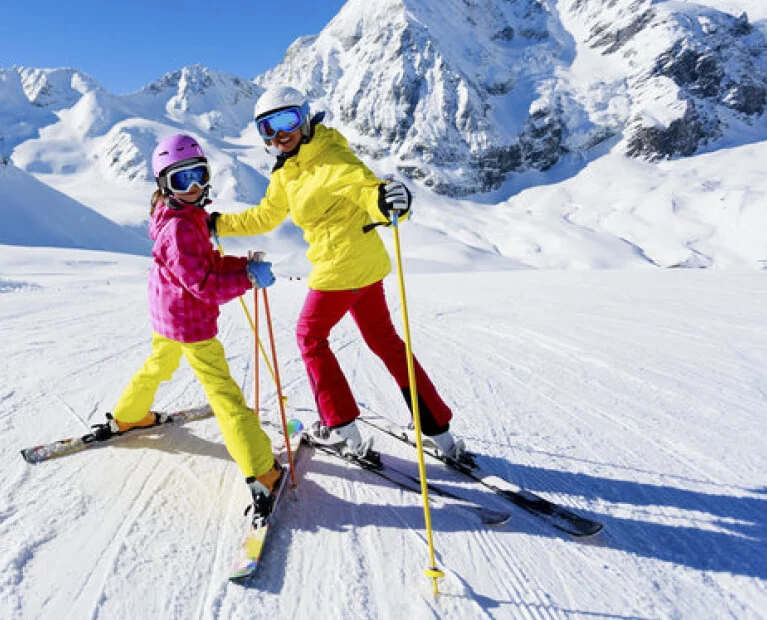Winter sports such as downhill skiing and snowboarding are excellent methods to stay active. Injuries can happen to anyone, regardless of skill level, so be aware of this. In order to avoid unpleasant surprises on the slopes this winter, familiarize yourself with the potential hazards ahead of time.

Common Skiing and Snowboarding Injuries
There are numerous injuries that can occur while skiing or snowboarder, and the information below can help you avoid them.
Shoulder Injury during Skiing and Snowboarding:
To fall on an outstretched arm or to apply direct stress to the upper arm while falling might induce a dislocation of the shoulder. A dislocation is usually excruciatingly painful, and you should seek medical attention right away. Rotator cuff and labrum (cartilage) tears are also common injuries to the shoulder.
Common Head Injuries in Skiing:
When you fall and hit your head, you’re more likely to suffer from a concussion, a long-term brain injury, or even death. All skiers and snowboarders should wear helmets to protect their heads from damage. Only about 40% of skiers wear helmets, despite mounting evidence that they dramatically lower the risk of brain injury.
Knee Twist or Rotation Injury:
It’s possible that the ski can cause the lower leg to rotate outward while the upper leg stays in place if a skier falls and their boot bindings don’t release. ACL (anterior cruciate ligament) and MCL (medial collateral ligament) tears can occur as a result of the twisting strain on the knee joint (medial collateral ligament). Snowboarders are less likely to have knee injuries. Because both legs are attached to the board when snowboarding, there is less likelihood of a knee twist or rotation.
How to Preventing Ski Injury?
Skiing and snowboarding injuries can be minimized with the right training. Given the amount of stress you place on your heart and musculature while skiing and snowboarding, it’s critical to improve your cardiovascular endurance. Biking, swimming, elliptical, treadmill, and steppers are all great ways to build cardiovascular endurance.
By strengthening the knees and hips (especially the lateral hip and quad musculature), you’ll be better able to do the hill motions. When you’re climbing a hill, it’s important to focus on keeping control during the eccentric (deceleration) phase of the exercise.

Oliver Greene is a sports geek at heart. From iconic moments to rising stars, he’s here to share his love of sports and the stories that make them special.
